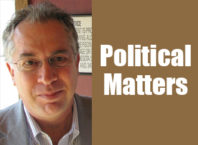"In Fourteen Hundred and Ninety Two,
Columbus sailed the ocean blue.
But everything else in the childhood
rhyme,
Ignores the historic details and
genocide."
— From “Fourteen Hundred Ninety-Two
(The Rewrite),” by Dana W. Hall
Where should we start? In 1492,
Cristoforo Colombo, an explorer from the Republic of Genoa (now part
of Italy), sailing under the flag of the Crown of Castile (now
Spain), set off to find the fastest route to the gold and spices of
the Orient. He set off westward in the Atlantic Ocean, and ended up
in the Caribbean, quite a long way from East Asia.
On his first voyage, Christopher
Columbus, who was wrong in nearly all of his geographic suppositions,
came ashore on an island in the present day Commonwealth of the
Bahamas. Historians are not sure of which island in the Bahamas
corresponds to the island that the Italian explorer called San
Salvador.
Columbus encountered the people living
on this island — known as Lucayan, Taino or Arawak – and found
them to be peaceful and hospitable. They wore gold earrings and
Columbus took some of the Arawaks as prisoners, demanding that they
show him where they got the gold. Columbus – who made four
round-trip voyages between Spain and the Americas and never stepped
on the North American continent – set the pattern of European
colonialism in the “New World.”
Let’s jump ahead 500 years, to 1992,
and the “National Columbus Quincentennial” celebration, the
official festivities marking the explorer’s first voyage of
“discovery.” President George H.W. Bush and the U.S. Congress
established something called the Christopher Columbus Quincentenary
Jubilee Commission to coordinate the official events in the U.S.
In Minneapolis, I got involved with
something called the Circles of 500 Quincentennial Fall Festival and
Pageant, an alternative community celebration coordinated by In the
Heart of the Beast Puppet and Mask Theatre. Specifically, I was hired
as editor of the Circles of 500 magazine. The other day I found a box
of files containing my research into Columbus – the history, the
official Columbus celebration and the myriad counterpoint efforts
around the world. American Indian organizations, church groups with
Indian ministries, the American Library Association and other outfits
published reams of pamphlets and study guides to rectify the
historical record.
The Science Museum of Minnesota hosted
a Columbus exhibit, which included a two-thirds size replica of the
Nina, a smaller ship that sailed from Spain in 1492. On May 29, 1992,
American Indian Movement (AIM) leader Vernon Bellecourt greeted the
“First Encounters” exhibit by splattering a pint of blood on the
replica ship’s sail and deck. Then he threw the Columbus mannequin
overboard. “This is symbolic of the blood spilled by Indian
people,” he explained.
I miss Vernon.
Also in 1992, the newspaper I edit and
publish, the American Jewish World, reported that Hillel at the U of
M and the American Indian Student Cultural Center joined in an event
marking the Columbus voyage, which led to the “virtual annihilation
of the Native American population,” and the expulsion of the Jews
from Spain in 1492 (this was part of a Christian religious initiative
known as the Spanish Inquisition).
I mention these events to show that
there have been 20-plus years of activism preceding the April 25
resolution, by the Minneapolis mayor and City Council, recognizing
the second Monday in October as Indigenous Peoples Day.
The City Council chambers were packed
when council member Alondra Cano read the resolution, which also
encourages the city’s efforts to “promote the well-being and
growth” of the local “American Indian and Indigenous community.”
There were some brief speeches by
Minneapolis Indian leaders and council members. I’ll just mention
that Blong Yang, a new member of the City Council, thoughtfully
observed that the official resolution “doesn’t replace Columbus
Day, it adds another group of folks to be recognized on the same
day.”
The elected official was referring to
the federal Columbus Day holiday, which was established in 1937.
After the passage of the resolution, I asked U.S. Rep. Keith Ellison
what he could do on the national level, vis-à-vis Columbus Day.
“We’re going to start researching
it and figure out how we can replicate the good work of the
Minneapolis City Council,” said Ellison, as he walked to the
elevator in City Hall. “We just started thinking about it today –
probably should have thought about it long ago.”
Ellison mentioned that there’s a
Congressional Native American Caucus (co-chaired by Rep. Betty
McCollum, from Minnesota’s Fourth District). “We’re going to
begin this vital conversation. Even this resolution passed today
began because some people said, ‘Hey, we should do this.’ So,
today we’ve been inspired to say, ‘What should we be doing on the
federal level?’ And I think there’s plenty that could be done.”




